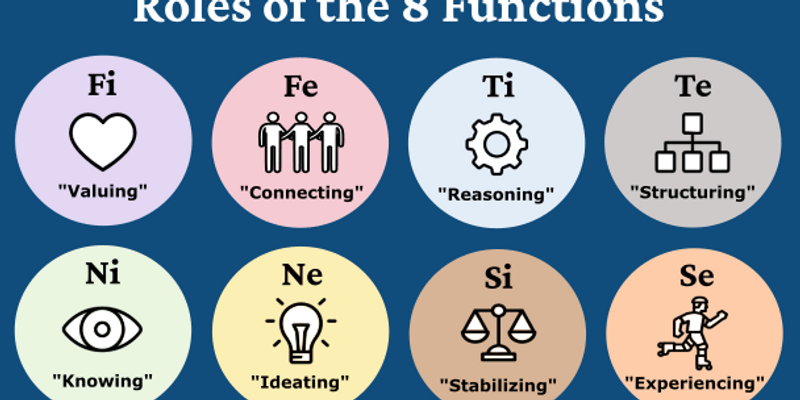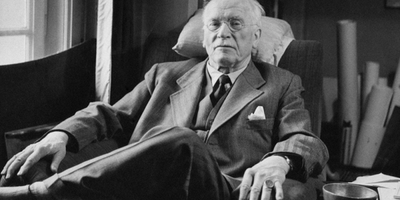Determining Functional Stack of MBTI Types

As an extension of the fundamentals of MBTI, the 8 cognitive functions. We will start of with explaining the functional stack hierarchy.
Functional Stack Hierarchy
Dominant function
The dominant function, also known as the hero function, is the one that develops the earliest in life and the function that one is most conscious of and has the most access to.
Auxiliary function
The auxiliary function, also known as the sidekick function, plays a supporting role to the hero function and is the second most conscious and accessible.
Tertiary function
The tertiary function is the second least accessible function.
Inferior function
The inferior function is the least conscious cognitive function.
Now that we have covered the hierarchy of the functional stack, we will dive into the rules that determine which cognitive functions go into which slot in the functional stack of each mbti type. Or rather, how functional stack determines mbti types.
1. The dominant function for extraverted types is always an extraverted function. In contrast, the dominant function for introverted types is always an introverted function. For the lower two functions, the introverted functions also dominates the extraverted functions.
2. Judging types have an extraverted judging function(Te or Fe) as their dominant or auxiliary function, whereas perceiving types have an extraverted perceiving function(Ne or Se) as their dominant or auxiliary function.
3. An introverted judging function is always paired with an extraverted functional opposite(Fe, Ti and Fi, Te). The same goes for perceiving functions(Ne, Si and Ni, Se).
4. A thinker type always has a thinking function in one of its top two functions. A feeler type always has a feeling function in one of its top two functions.
5. An intuitive type always has an intuitive function in one of its top two functions. A sensing type always has a sensing function in one of its top two functions.
6. The top 2 functions must have one perceiving and one judging function. The same goes for the bottom two functions.
Let us practice typing on a couple of types. An INTP is an introverted type, hence its dominant function is introverted(Ni, Si, Ti, or Fi) by rule 1. By rule 2, since an INTP is a perceiving type, it has an extraverted perceiving function(Ne or Se) as either of its top two functions. By rule 5, since an INTP is an intuitive type, it has an intuitive function as one of its top two functions(Ne). By rule 6, the dominant must be a thinking function(Ti or Si). By rule 4, since INTP is a thinker type, its dominant is Ti and its auxiliary is Ne. By rule 3, its bottom 2 functions are Si and Fe.
ESFJ is a J type and an extraverted, hence Fe as its dominant function. Since it is a sensor, Si is its auxiliary. Hence Ne is its tertiary and Ti is inferior function.
Here are the functional stacks for the 16 personalities:
INTP: Ti, Ne, Si, Fe
ENTP: Ne, Ti, Fe, Si
INTJ: Ni, Te, Fi, Se
ENTJ: Te, Ni, Se, Fi
INFP: Fi, Ne, Si, Te
ENFP: Ne, Fi, Te, Si
INFJ: Ni, Fe, Ti, Se
ENFJ: Fe, Ni, Se, Ti
ISTP: Ti, Se, Ni, Fe
ESTP: Se, Ti, Fe, Ni
ISTJ: Si, Te, Fi, Ne
ESTJ: Te, Si, Ne, Fi
ISFP: Fi, Se, Ni, Te
ESFP: Se, Fi, Te, Ni
ISFJ: Si, Fe, Ti, Ne
ESFJ: Fe, Si, Ne, Ti



